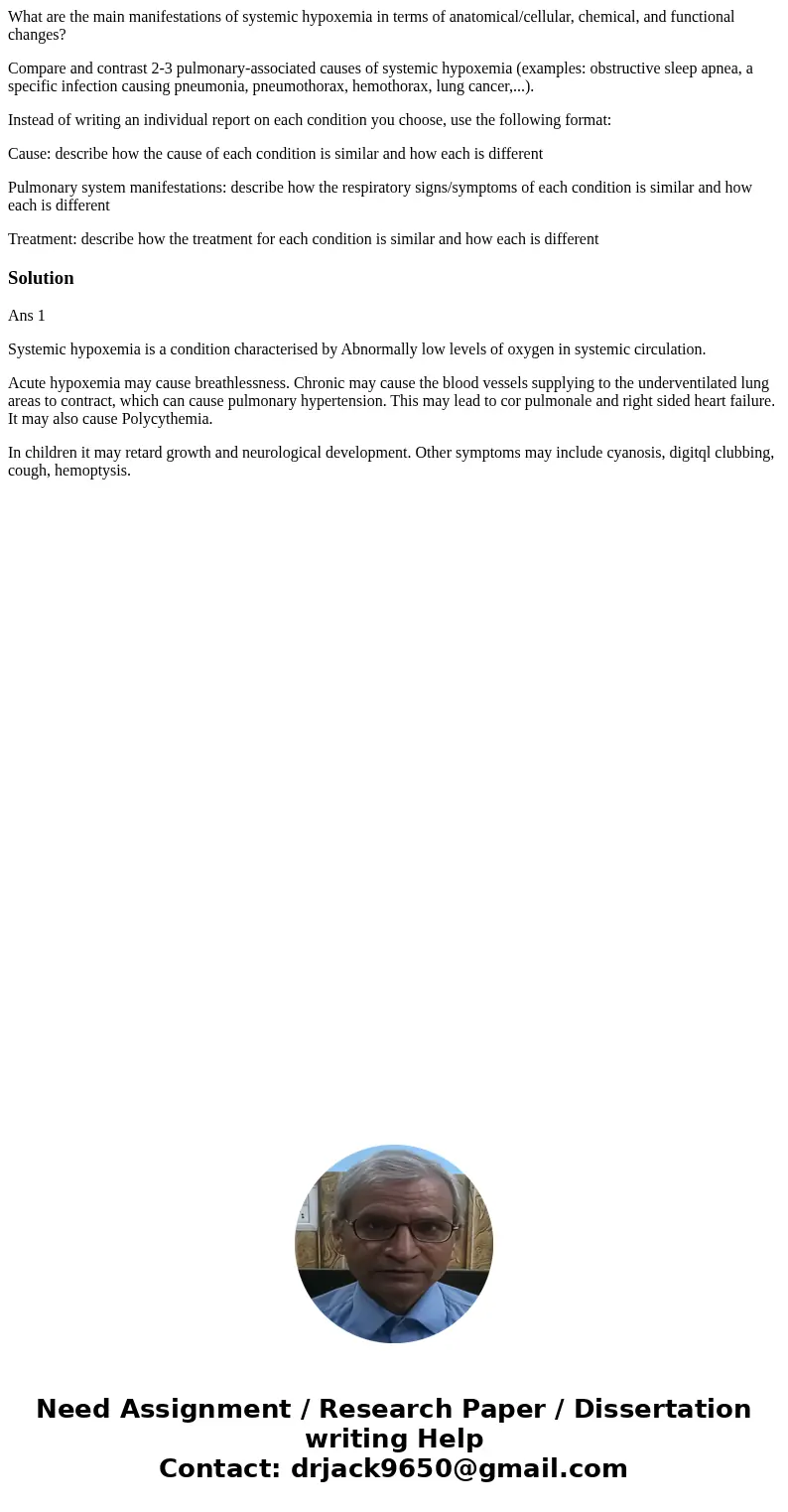What are the main manifestations of systemic hypoxemia in te
What are the main manifestations of systemic hypoxemia in terms of anatomical/cellular, chemical, and functional changes?
Compare and contrast 2-3 pulmonary-associated causes of systemic hypoxemia (examples: obstructive sleep apnea, a specific infection causing pneumonia, pneumothorax, hemothorax, lung cancer,...).
Instead of writing an individual report on each condition you choose, use the following format:
Cause: describe how the cause of each condition is similar and how each is different
Pulmonary system manifestations: describe how the respiratory signs/symptoms of each condition is similar and how each is different
Treatment: describe how the treatment for each condition is similar and how each is different
Solution
Ans 1
Systemic hypoxemia is a condition characterised by Abnormally low levels of oxygen in systemic circulation.
Acute hypoxemia may cause breathlessness. Chronic may cause the blood vessels supplying to the underventilated lung areas to contract, which can cause pulmonary hypertension. This may lead to cor pulmonale and right sided heart failure. It may also cause Polycythemia.
In children it may retard growth and neurological development. Other symptoms may include cyanosis, digitql clubbing, cough, hemoptysis.

 Homework Sourse
Homework Sourse